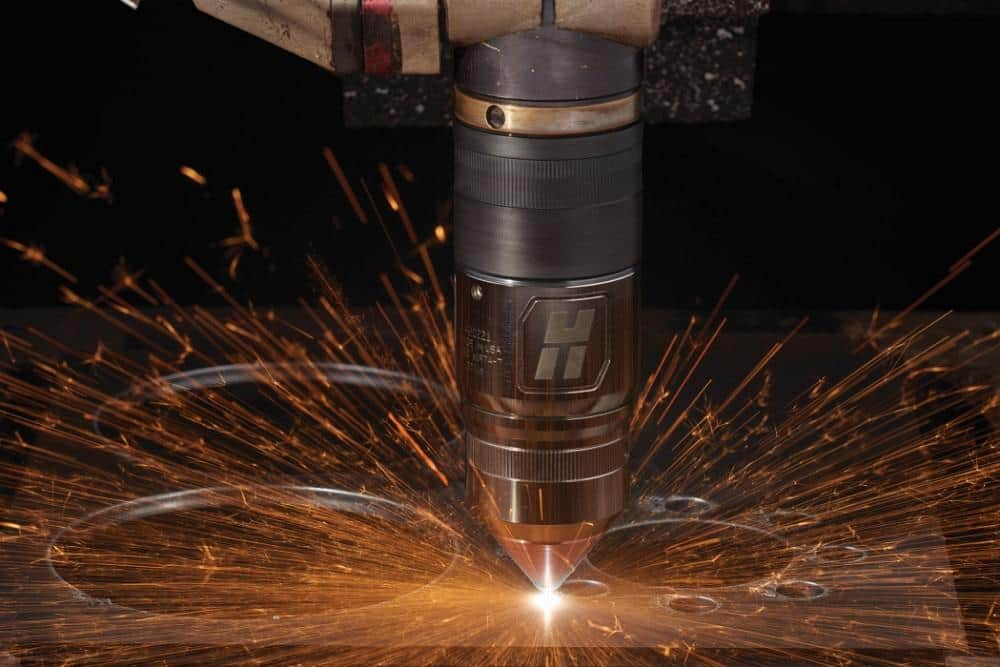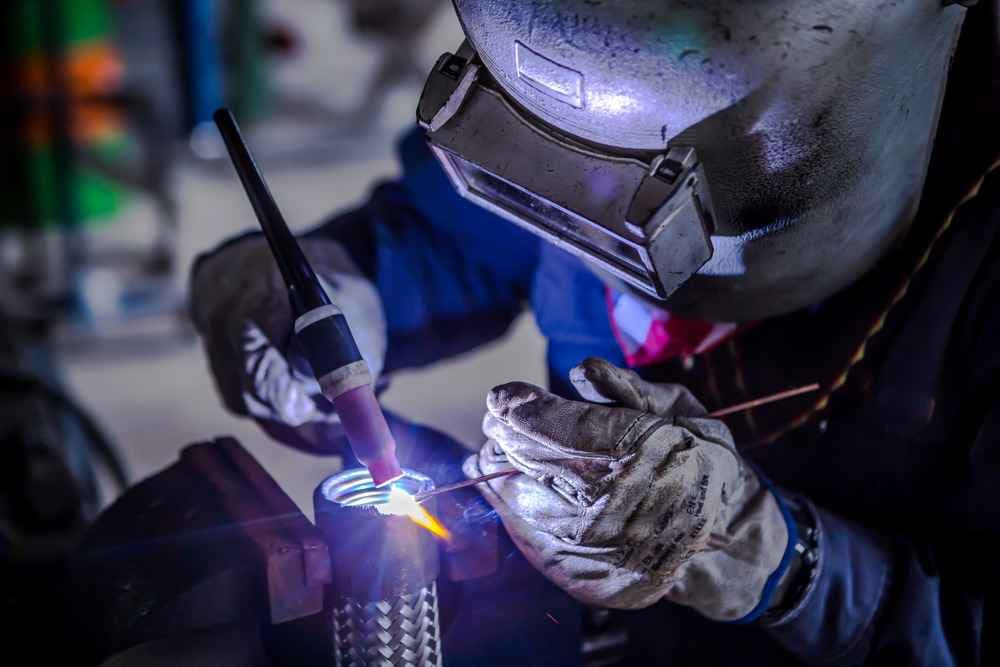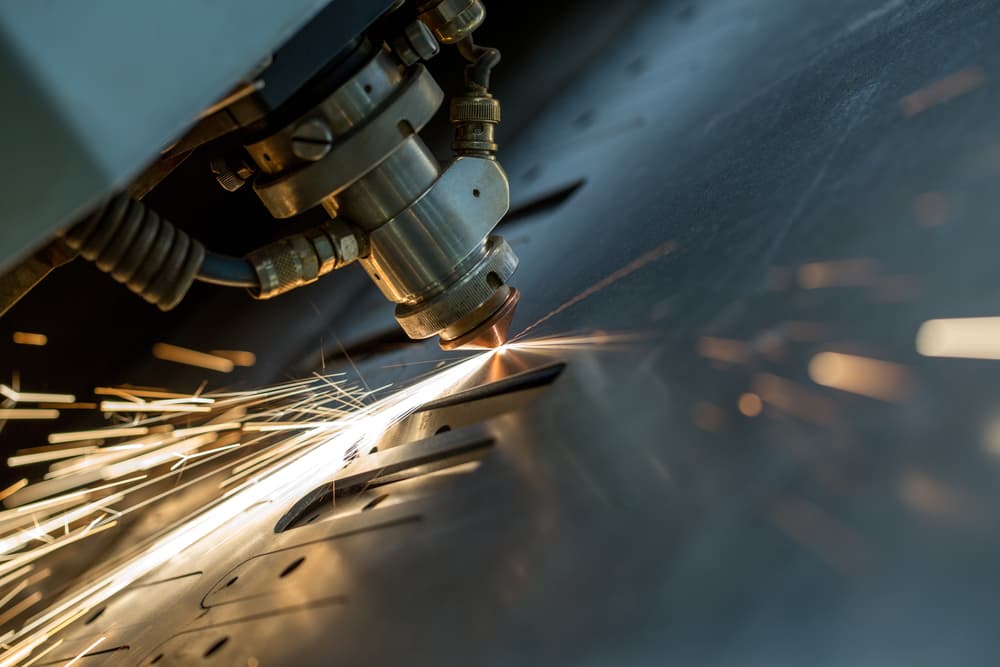There are many advantages of using coated rods or electrodes in the process of welding. Electrodes are required for arc welding. In order to generate the arc required for melting, each approach requires the use of a specific type of electrode. Because of this, electrodes used for the different forms of arc welding can look very different. Within each electrode family, there is a multitude of variations specifically designed for specific applications. For example, some electrodes have coatings, and each unique chemical combination brings its own unique benefits. Stick welding and inert gas arc welding both use covered electrodes in their processes (SMAW). Welding electrodes must be coated for several reasons. It offers better arc control, helps protect the molten metal from contamination, and allows for cleaner, stronger welds. When you understand the reason why welding electrodes are coated, as well as the unique advantages of choosing one type of coating over another, you will be better equipped to select the electrode that will most effectively serve your SMAW project. Electrodes used for welding perform the function of conducting the arc required for the melting process. A weld pool cannot form if there is no arc. No fusion can take place without a weld pool. An electrode of some kind is required for every type of arc welding. Consumable electrodes and non-consumable electrodes are the two main categories of electrodes. Electrode coatings can be used for a variety of applications. Different types of coatings and materials offer a variety of benefits and can meet a variety of criteria uniquely tailored to the specifics of the project. However, there are properties that all coatings have in common and that differ only depending on the degree of coating of the electrode. These qualities: Many of the properties of light-weight coatings and heavy-duty coatings, sometimes referred to as shielded-arc coatings, are identical. The main difference between the two is that heavy coatings have far more robust properties. Because of their strength, shielded arc coatings are a good choice for use in applications that require high performance manufacturing.  Advantages of using electrode coatings:
Advantages of using electrode coatings:
- Regulation of the current
All coatings offering this benefit increases control over the current used to melt the material. Although bare electrodes exist, their use is much less common because the resulting arc can be significantly less predictable. Control is improved over that provided by bare electrodes by either a heavier or lighter cover; nonetheless, the former offers more control than the latter. Compared to welding with a bare electrode, welding with a shielded electrode produces significantly less spatter, which in turn allows for the construction of welds that are smoother and more aesthetically pleasing. The concentrated current created by an electrode coating can not only go deeper but also penetrate further, resulting in stronger welds.
- Protective gas
In addition to providing additional control, certain electrode coatings can help reduce and even eliminate contamination. When a coating melts during the welding process, the materials that make up the coating can release shielding gases. These gases protect the weld pool from oxides, sulfur and other potentially harmful elements. This flux can also “clean” the metal, removing oxides and other contaminants in the process.
- Slag
Another benefit associated with using coated electrodes is slag. The material that remains after a weld can shield the metal while it is still cooling and can help improve the strength and quality of the weld. Numerous types of coatings each offer their own unique benefits. When choosing the type of electrode coating that is best for your project, it is crucial to have a solid understanding of the functions performed by each type. The next few sections examine the precise roles played by each component of an electrode coating. 
Welding process
Each different welding method, has a different process. Welding is a manufacturing process in which materials, usually metals or thermoplastics, are joined by fusing parts together and using heat to cool them down to form an alloy. Welding differs from low-temperature methods such as brazing and soldering, which do not melt the base metal. In addition to melting the base metal, filler material is usually added to the joint to form a pool of molten material (the weld pool) which cools down to form a joint bonded to the base material depending on the configuration of the weld. Stronger Pressure can be used in combination with heat or alone to create a weld. Welding also requires some sort of shield to protect filler metals or molten metals from contamination or oxidation. Many different energy sources can be used for welding, including flame (chemical), arc (electric), laser, electron beam, friction, and ultrasound. While welding is often an industrial process, it can be done in a wide variety of settings, including outdoors, underwater, and in space. Welding is a hazardous activity and precautions must be taken to avoid burns, electric shock, eye damage, inhalation of toxic gases and fumes, and exposure to intense ultraviolet radiation. Until the end of the 19th century, the only welding process was forge welding, which blacksmiths used for thousands of years to heat and forge iron and steel. Arc welding and oxy-fuel welding were among the first processes developed around the turn of the century, and electrical resistance welding soon followed. Welding technology advanced rapidly in the early 20th century as world wars spurred demand for reliable and inexpensive joining methods. After the war, several modern welding methods were developed, including manual methods such as gas shielded arc welding, which is currently one of the most popular welding methods, as well as semi-automatic and automatic methods, such as metal shield arc welding, welding under flux. Arc welding, flux-cored wire welding, and electro slag welding. Development continued in the second half of the century with the invention of laser welding, electron beam welding, magnetic pulse welding, and friction stir welding. Today, as science advances, robotic welding is increasingly being used in industrial settings, and researchers continue to develop new welding methods and better understand welding quality.  Different types of welding processes:
Different types of welding processes:
- Gas welding
The most common gas welding process is oxy-fuel welding, also known as oxyfuel welding. It is one of the oldest and most versatile welding processes but has fallen out of favor in the industry in recent years. It is still widely used for tube and pipe welding and repair work. The equipment is relatively inexpensive and simple, and typically uses the combustion of acetylene in oxygen to produce a welding flame temperature of around 3,100 °C (5,600 °F). The flame causes the weld to cool more slowly because it is less concentrated than the arc, which can lead to more residual stress and deformation of the weld but makes it easier to weld high alloy steels. A similar process commonly referred to as oxyfuel cutting, is used to cut metals.
- Arc welding process
One of the most common types of arc welding is shielded gas arc welding (SMAW); it is also known as manual metal arc welding (MMAW) or arc welding. Electric current is used to start an arc between the base material and a consumable electrode rod made of filler material (usual steel) and coated with a flux that releases carbon dioxide (CO2). Protects the weld zone from oxidation and contamination through manufacturing. During the welding process. The electrode core itself serves as a filler, eliminating the need for a separate filler. The process is versatile and can be performed with relatively inexpensive equipment, making it suitable for workshops and fieldwork. An operator with a modest level of training and experience can become a fairly skilled craftsman. Welding time increases due to the frequent replacement of the consumable electrode and the removal of slag, and flux residue, after welding. 
Coated electrodes
The term "coated electrodes" refers to electrodes that have a layer of flux thereon on them and are coated with flux. As this flux decomposes, it produces gases that protect the weld from contaminants and slag. In addition, the coated electrodes improve arc stability and weld seam quality. Core wire is the name given to the straight, solid metal wire that makes up the electrode. This wire has a layer of flux wrapped around it in a circular pattern. Approximately 25 to 50mm of space is left uncoated at one end of the electrode for easy holding in a welding rod holder. This space is left uncoated to allow the electrode to be used. Depending on the welding power source, the material being welded, and other factors, the coating material that is applied to the arc welding electrodes can be one of several different types. The following is a list of the six different types of electrode coatings:
- Types of cellulose
- Type of rutile
- Rutilic acid type
- Acid type
- Oxidizing Type
- Basic type
Types of cellulose About thirty percent of the organic components that make up cellulosic coatings, such as wood floors, charcoal, cotton, cellulose, yarn, paper wrappers, gums as a deoxidizer, and liquid sodium as a binder silicate, are present in these coatings. Electrodes with a cellulose-like coating produce a powerful plasma jet, which in turn ensures excellent penetration. This particular type of electrode has a slow burning rate and the amount of slag it produces is manageable, making it an excellent choice for position welding. The process of arc welding involves the breakdown of cellulose, resulting in the formation of a gas shield that protects the arc from oxygen and nitrogen in the surrounding air. Direct current is typically used to power electrodes that have a cellulosic coating on their surface. So that these electrodes can be operated with both alternating current and direct current, calcium and potassium compounds are added to the coating material in addition to potassium silicate, which acts as a binder.  Type of rutile The rutile-coated electrodes (TiO2) contain around fifty percent titanium dioxide. Compounds rich in rutile, kaolin, sodium silicate, calcium and potassium are among the most important ingredients. Good arc stability can be achieved during the arc welding process due to the presence of certain compounds. These electrodes can easily be operated with the alternating current if the voltage is kept low. Electrodes of this type can not only produce viscous, heavy, and compact slag but also be used for welding in both vertical and overhead positions. In addition to being easy to use, the spatter caused by the slag is minimal. Both penetration and weld build-up rates are about average. In addition, the penetration is about medium. As a result of these factors, rutile-type electrodes are widely used in general engineering applications. Acidic nature Fluxes such as iron, manganese compounds, silicon dioxide, and potassium silicate are typically found in acid-type electrodes. There are no organic components present in acidic flux coatings. This coating generates a significant amount of acidic slag during the arc welding process in which it is applied. These electrodes have a coating that contains deoxidizers, and it is these deoxidizers that give a good weld deposit with good mechanical properties. A kind of acidic rutile These are the types of electrodes that, as their names suggest, have characteristics of both acid type and rutile type electrodes. Although slag formation in rutile-coated on-axis electrodes is comparable to that of acid-type electrodes, the flow ability of the slag produced by these electrodes is somewhat higher. The weld made using these electrodes has mechanical properties comparable to those made using acid electrodes.
Type of rutile The rutile-coated electrodes (TiO2) contain around fifty percent titanium dioxide. Compounds rich in rutile, kaolin, sodium silicate, calcium and potassium are among the most important ingredients. Good arc stability can be achieved during the arc welding process due to the presence of certain compounds. These electrodes can easily be operated with the alternating current if the voltage is kept low. Electrodes of this type can not only produce viscous, heavy, and compact slag but also be used for welding in both vertical and overhead positions. In addition to being easy to use, the spatter caused by the slag is minimal. Both penetration and weld build-up rates are about average. In addition, the penetration is about medium. As a result of these factors, rutile-type electrodes are widely used in general engineering applications. Acidic nature Fluxes such as iron, manganese compounds, silicon dioxide, and potassium silicate are typically found in acid-type electrodes. There are no organic components present in acidic flux coatings. This coating generates a significant amount of acidic slag during the arc welding process in which it is applied. These electrodes have a coating that contains deoxidizers, and it is these deoxidizers that give a good weld deposit with good mechanical properties. A kind of acidic rutile These are the types of electrodes that, as their names suggest, have characteristics of both acid type and rutile type electrodes. Although slag formation in rutile-coated on-axis electrodes is comparable to that of acid-type electrodes, the flow ability of the slag produced by these electrodes is somewhat higher. The weld made using these electrodes has mechanical properties comparable to those made using acid electrodes.  Kind that oxidizes Oxidizing type electrodes have a coating consisting of iron oxide and silicate with or without manganese oxide. During the arc welding process, these types of electrodes generate a significant amount of slag, while the weld itself has poor mechanical properties. Therefore, the application of this type of electrode is limited (it is mainly used for sheet metal fabrication processes). The metal electrodes manufactured by our brand are genuine, made of high-quality materials, and offered in commercial and professional packaging. Our solder wire is well coated and made from metals such as cast iron, steel, etc. You can contact us through authorized owners of manufacturing units and online markets to buy our best and high quality products.
Kind that oxidizes Oxidizing type electrodes have a coating consisting of iron oxide and silicate with or without manganese oxide. During the arc welding process, these types of electrodes generate a significant amount of slag, while the weld itself has poor mechanical properties. Therefore, the application of this type of electrode is limited (it is mainly used for sheet metal fabrication processes). The metal electrodes manufactured by our brand are genuine, made of high-quality materials, and offered in commercial and professional packaging. Our solder wire is well coated and made from metals such as cast iron, steel, etc. You can contact us through authorized owners of manufacturing units and online markets to buy our best and high quality products.
